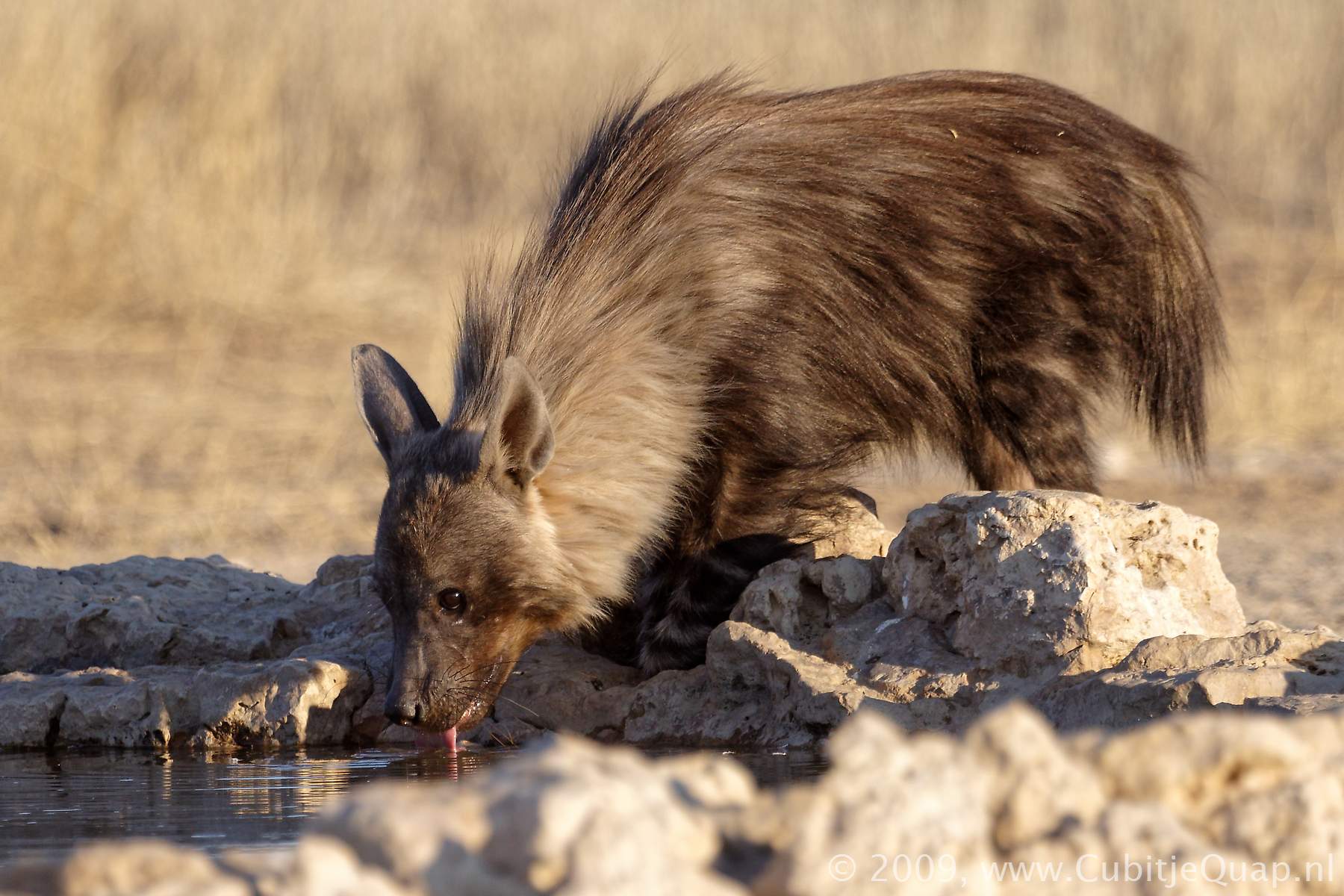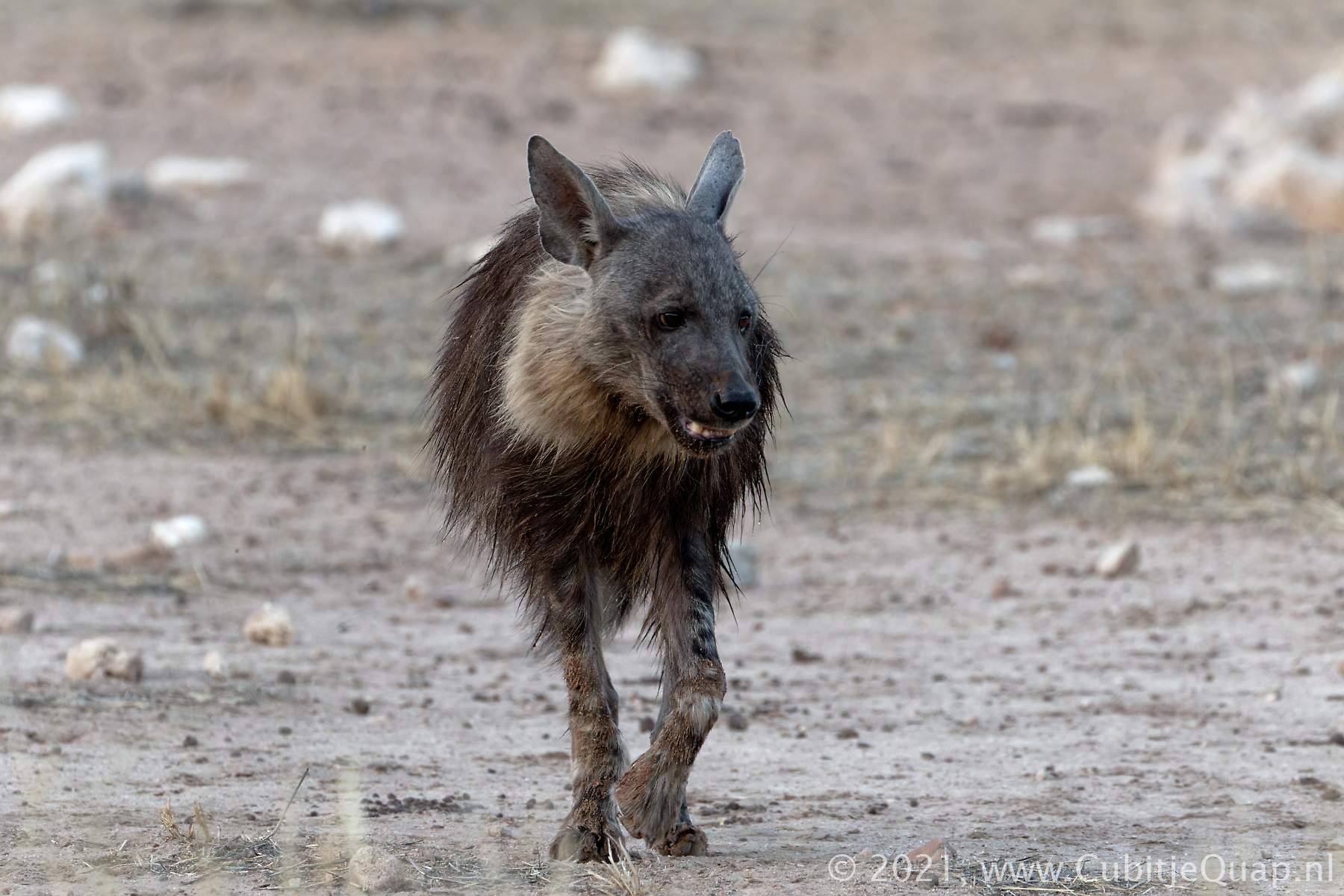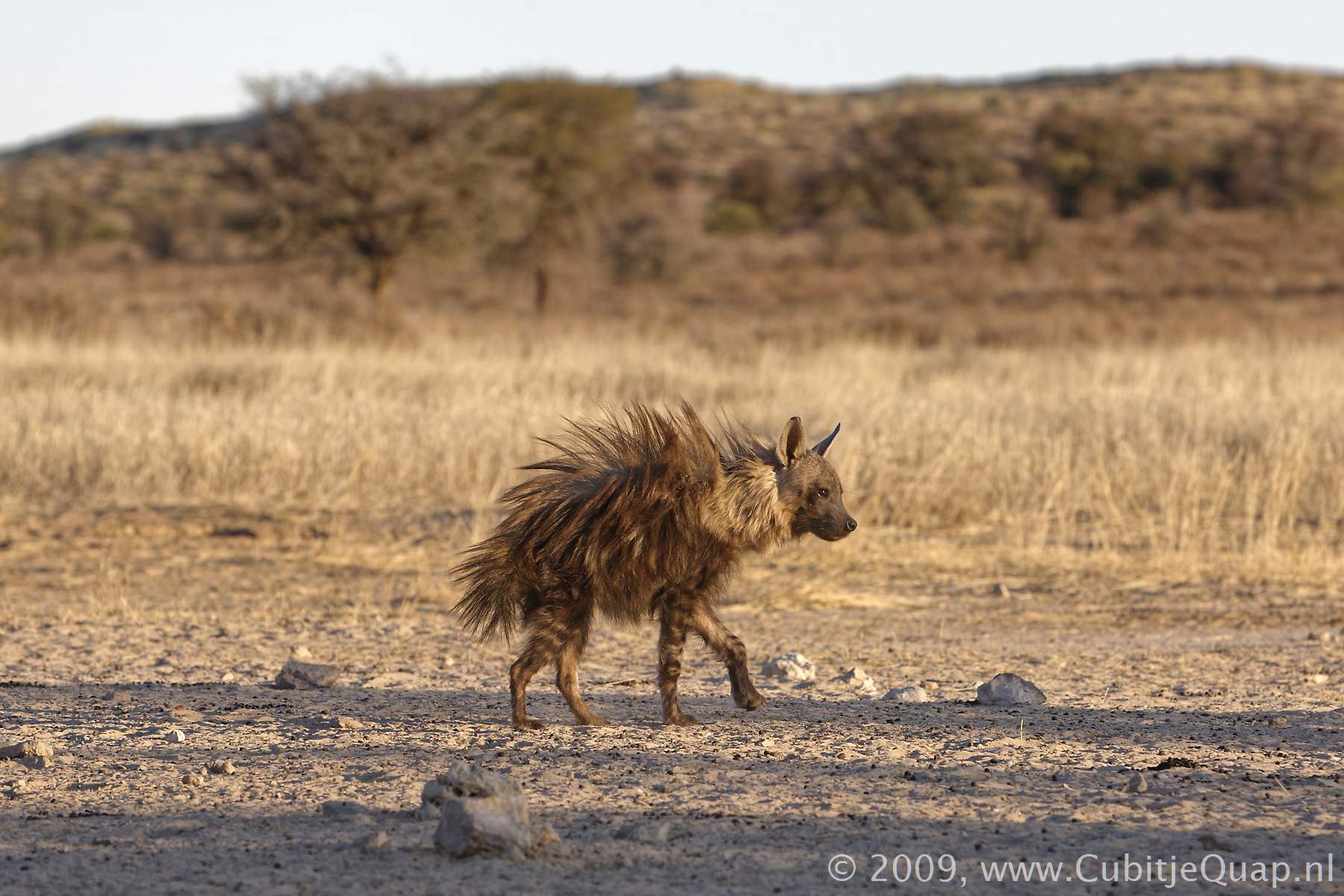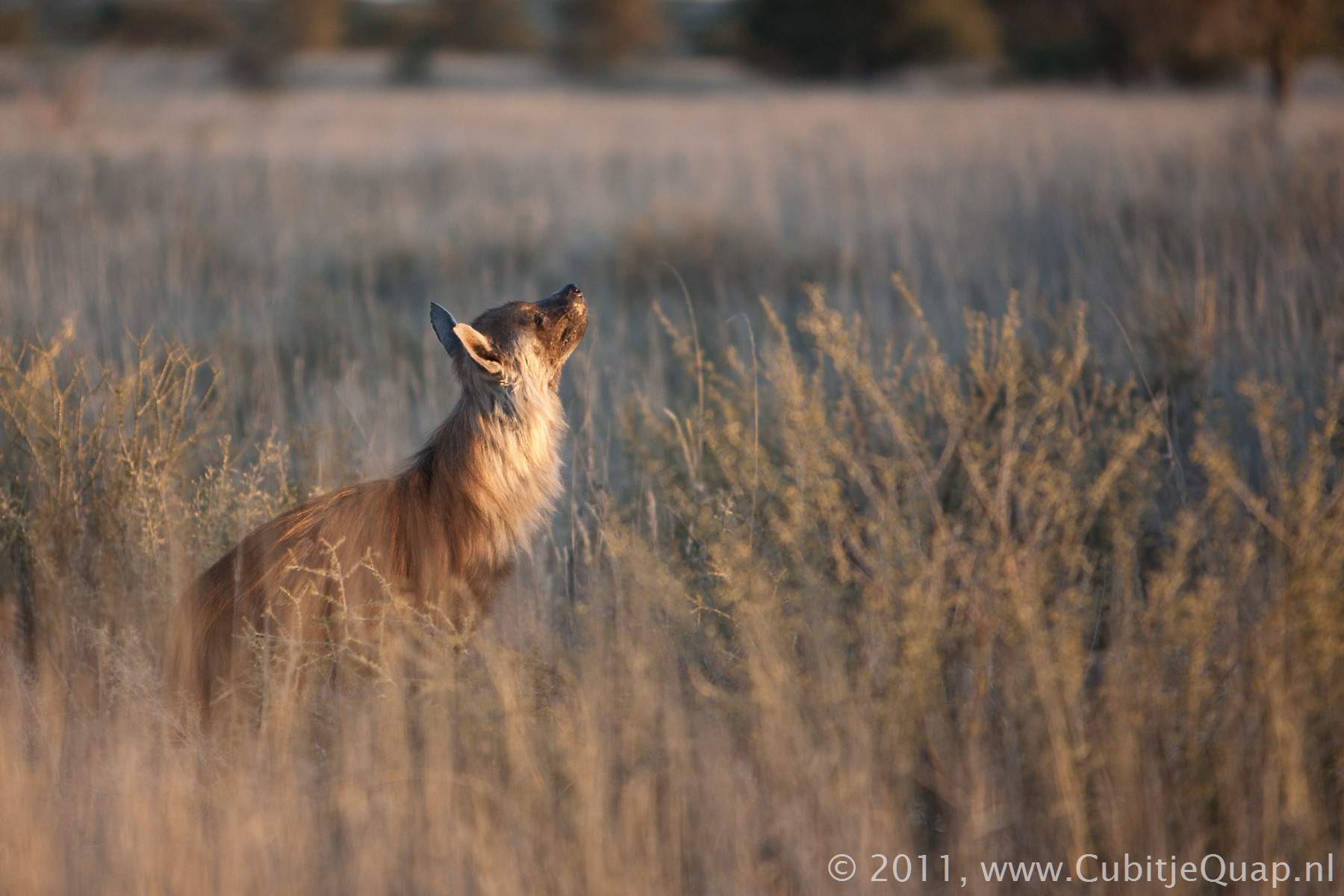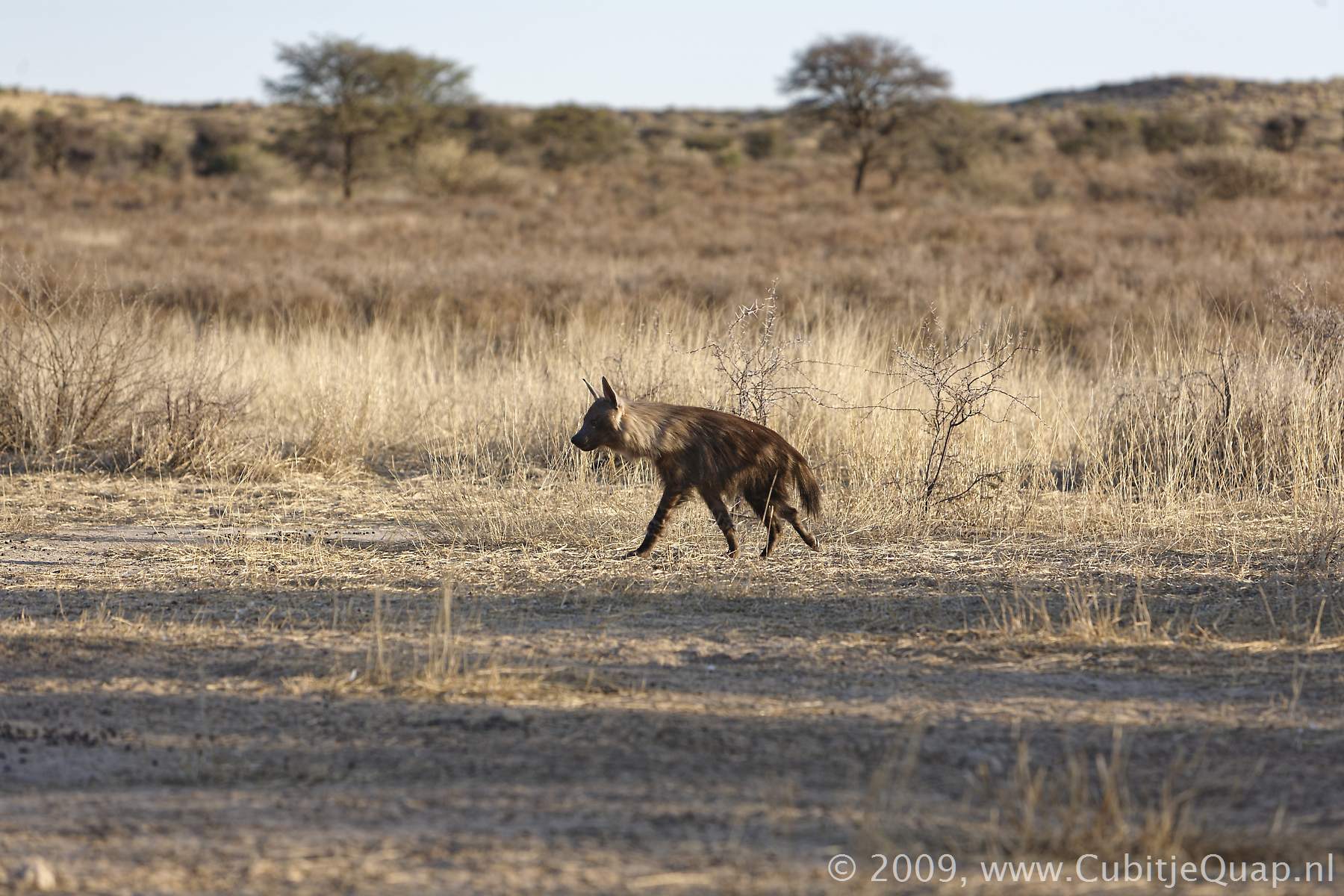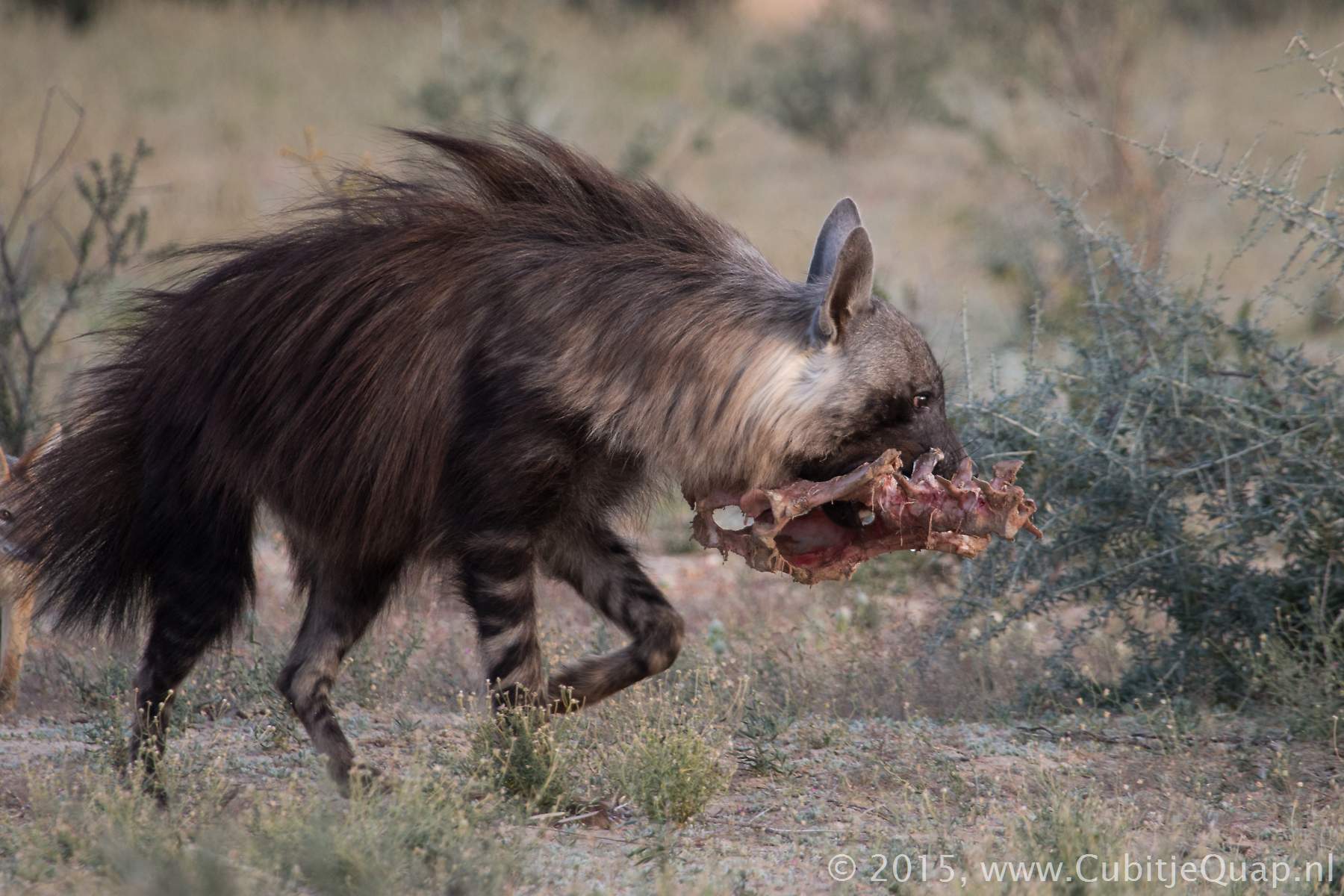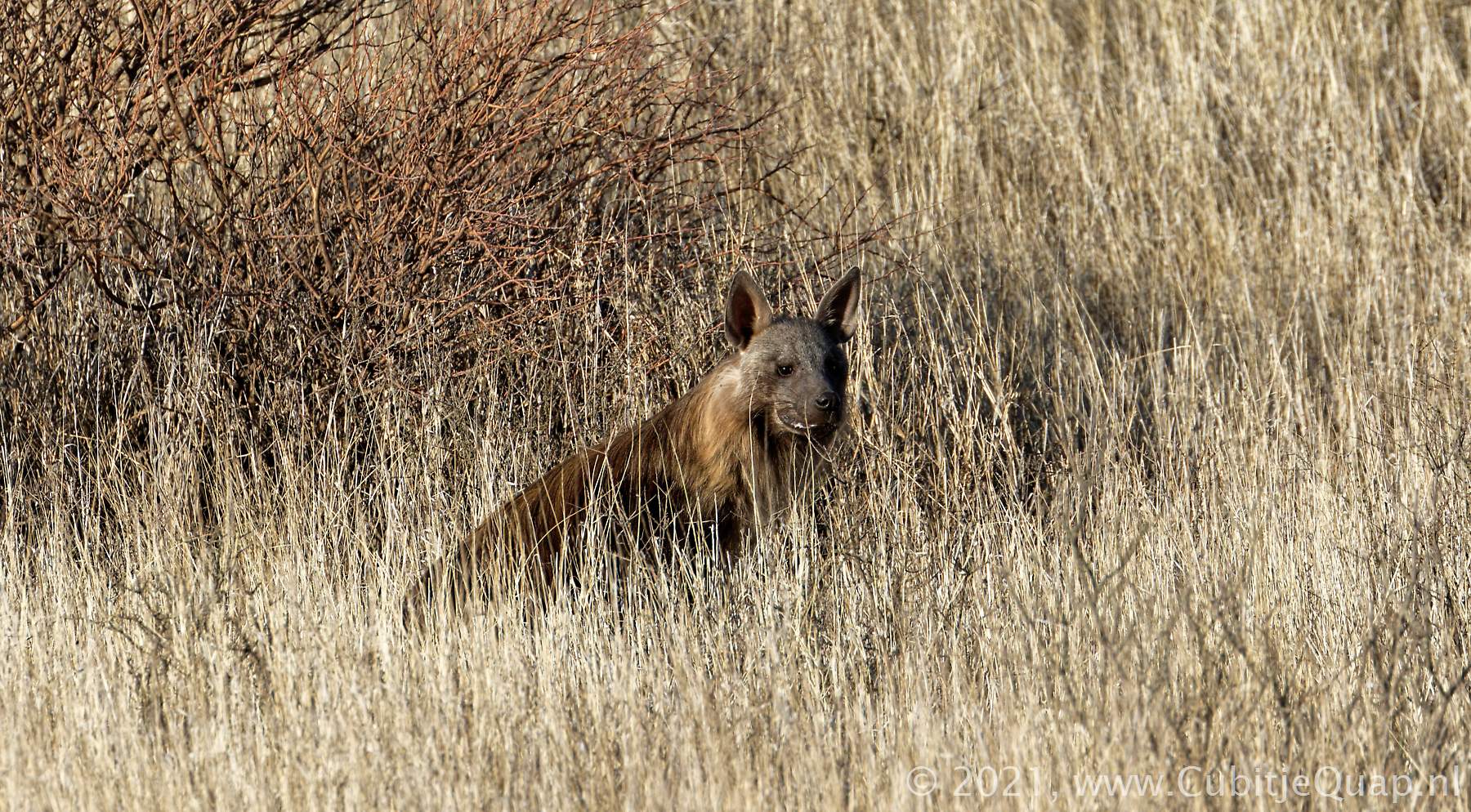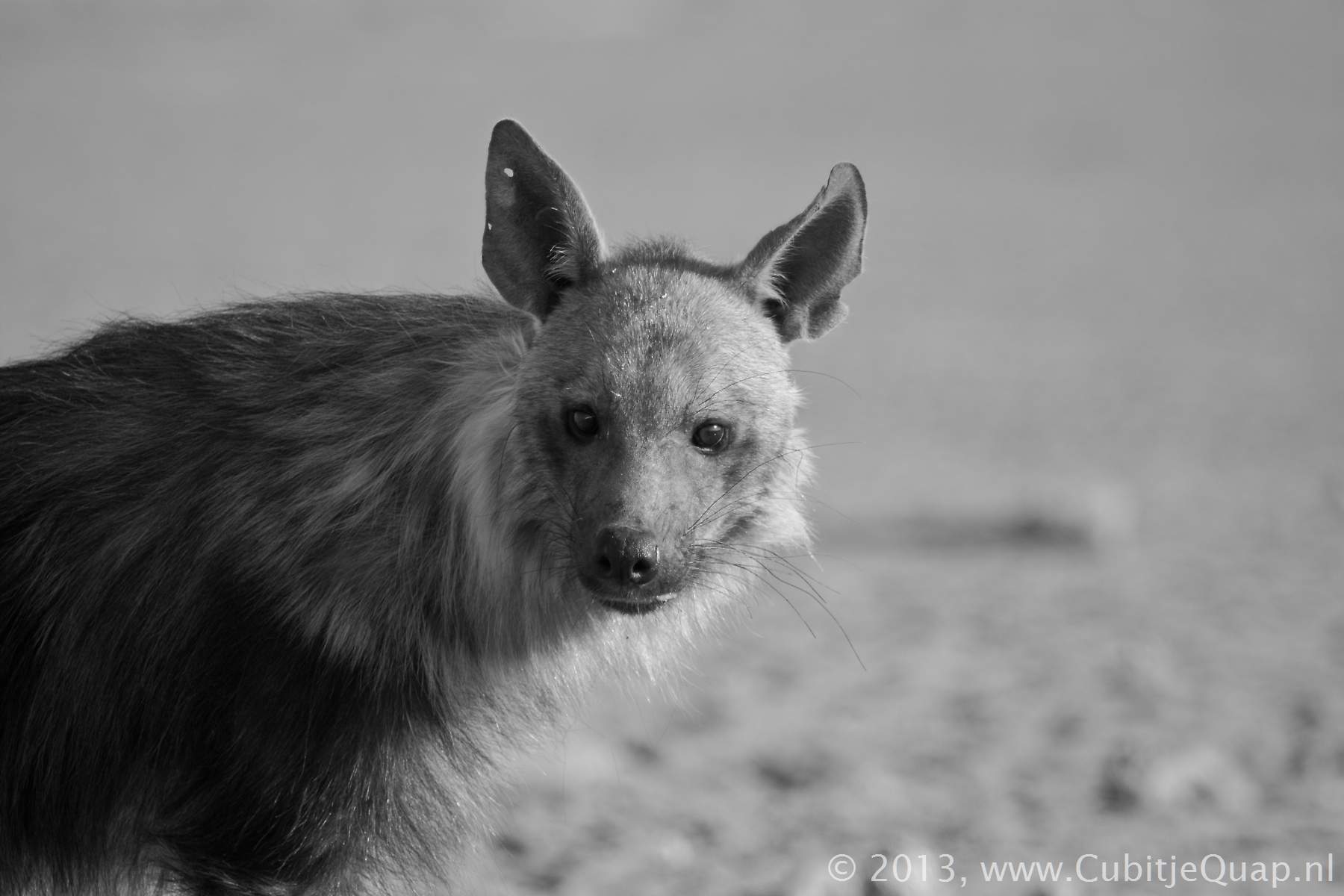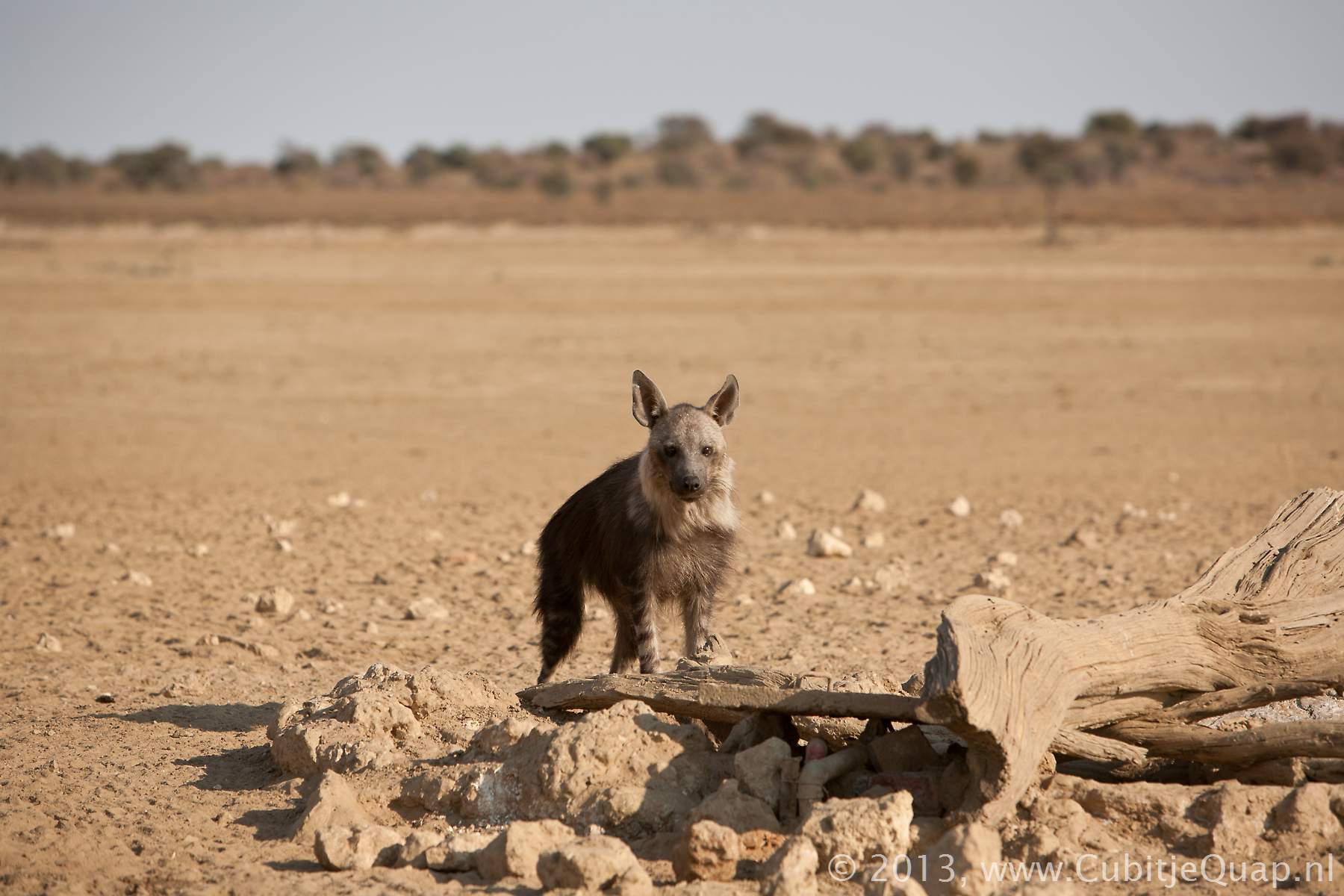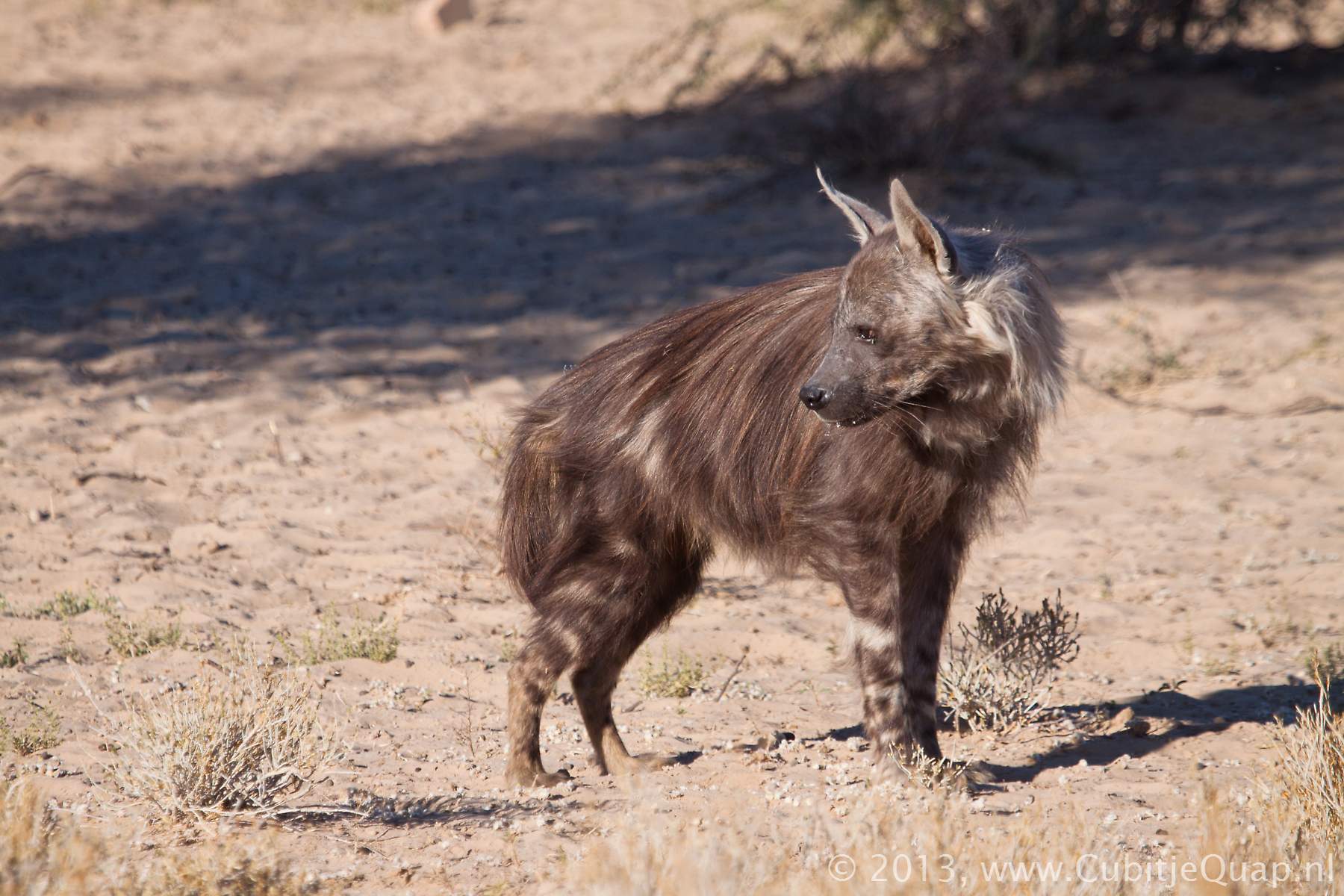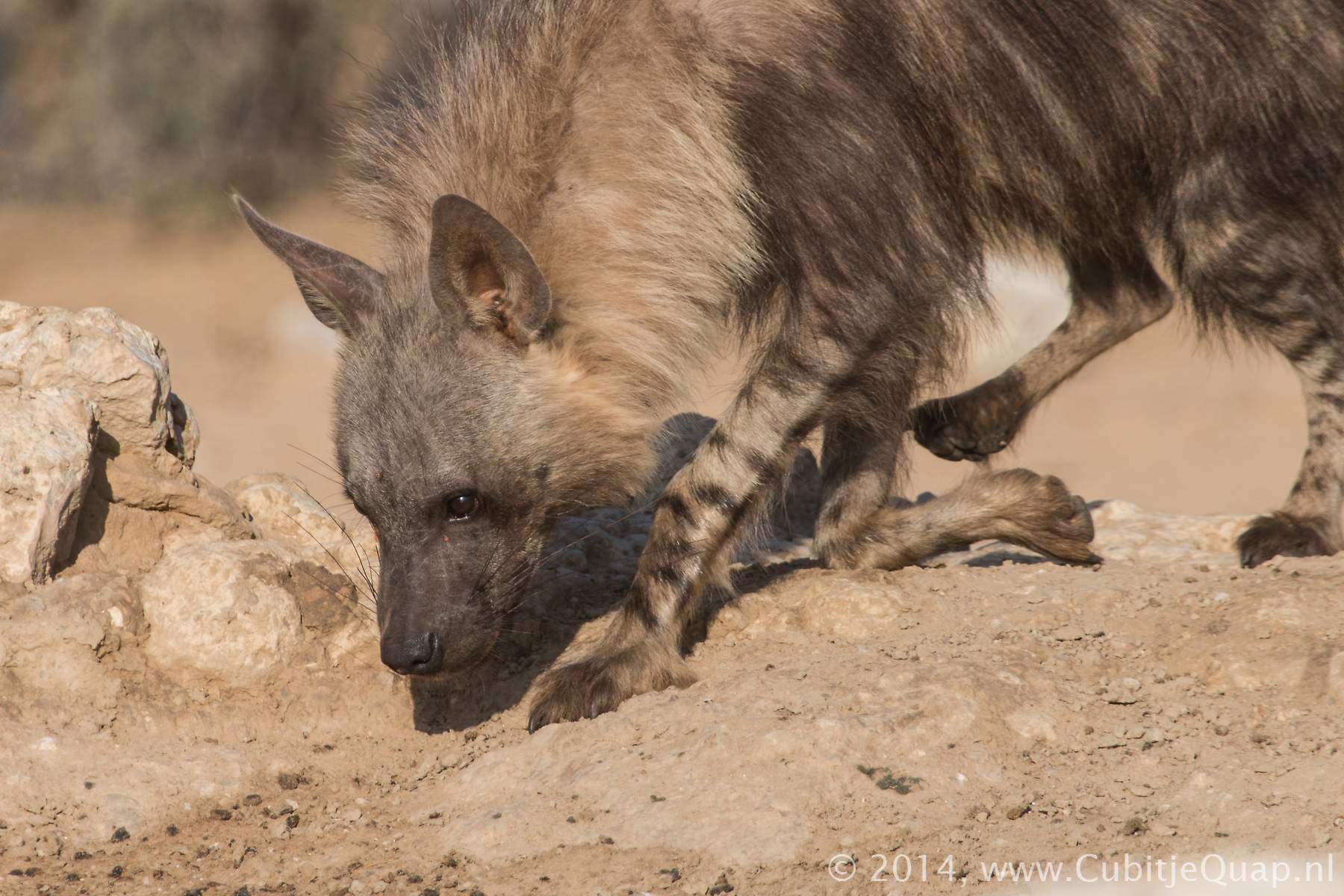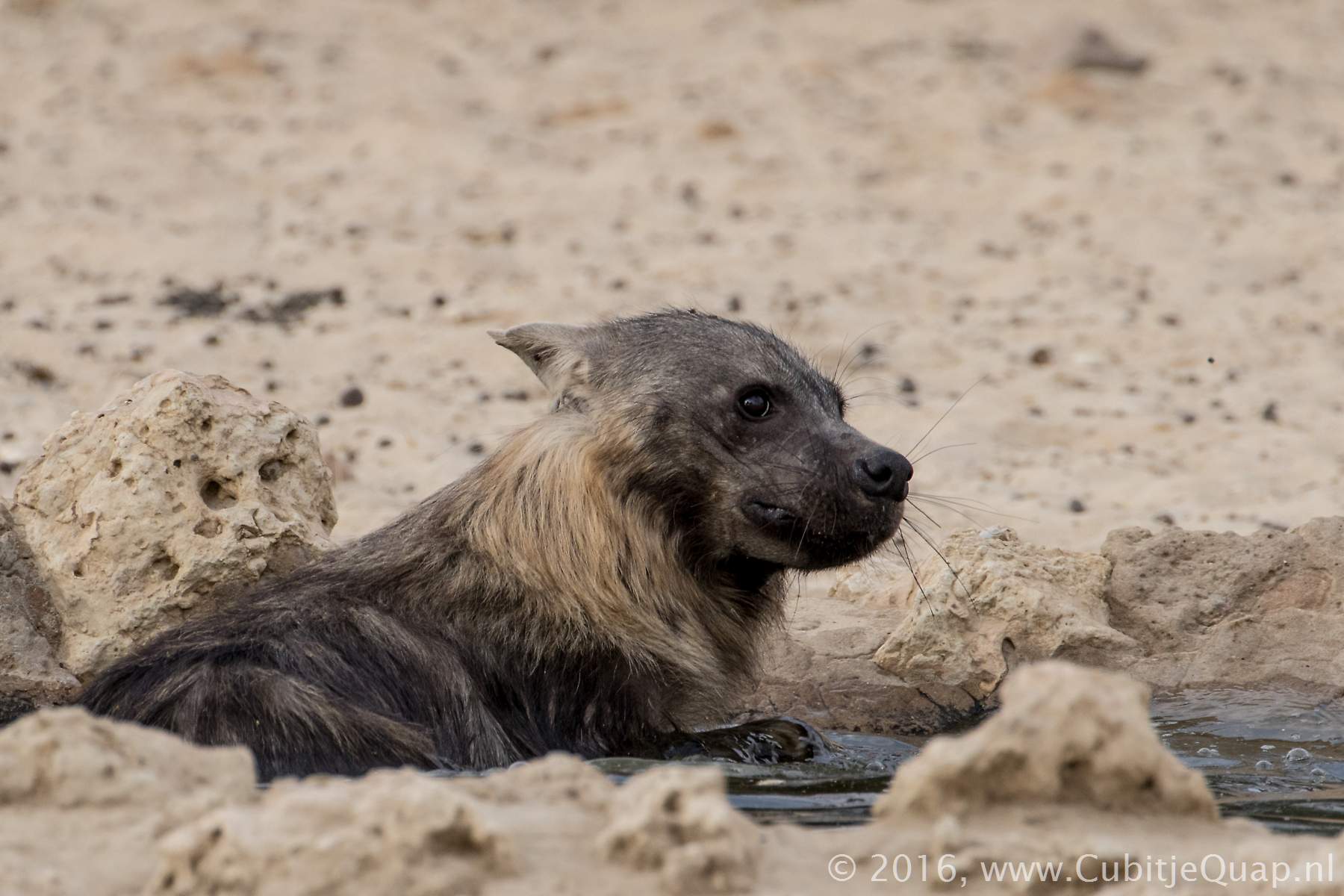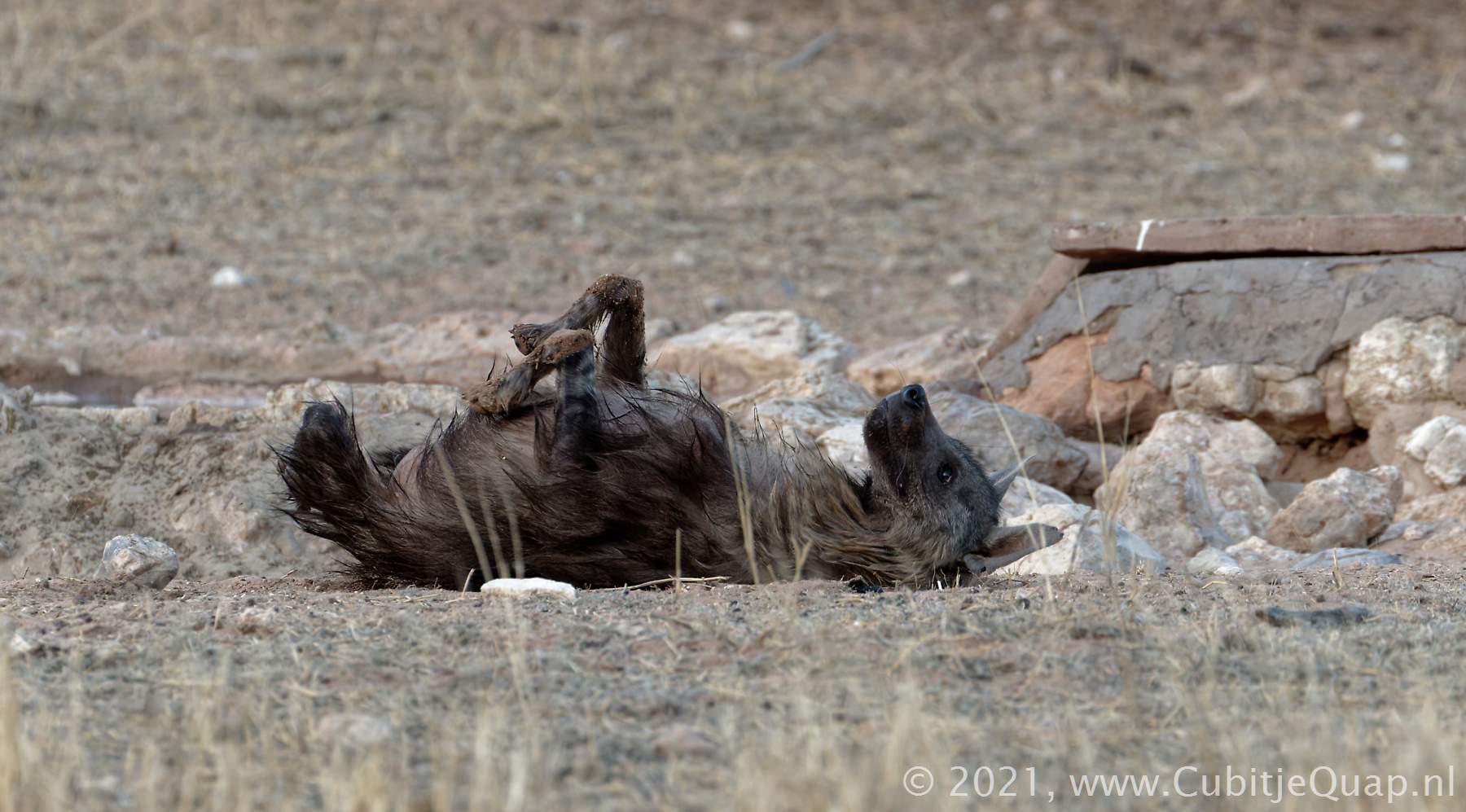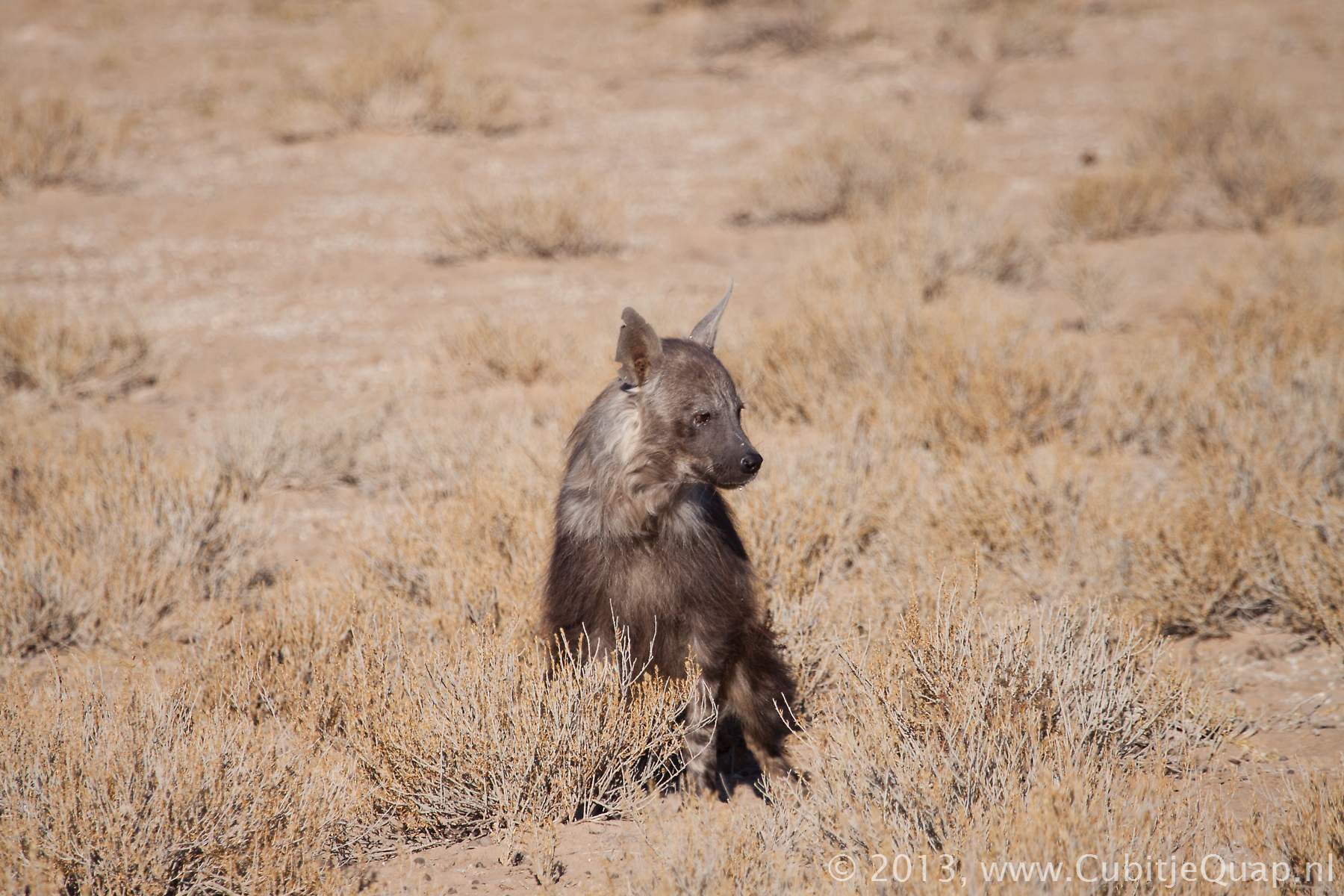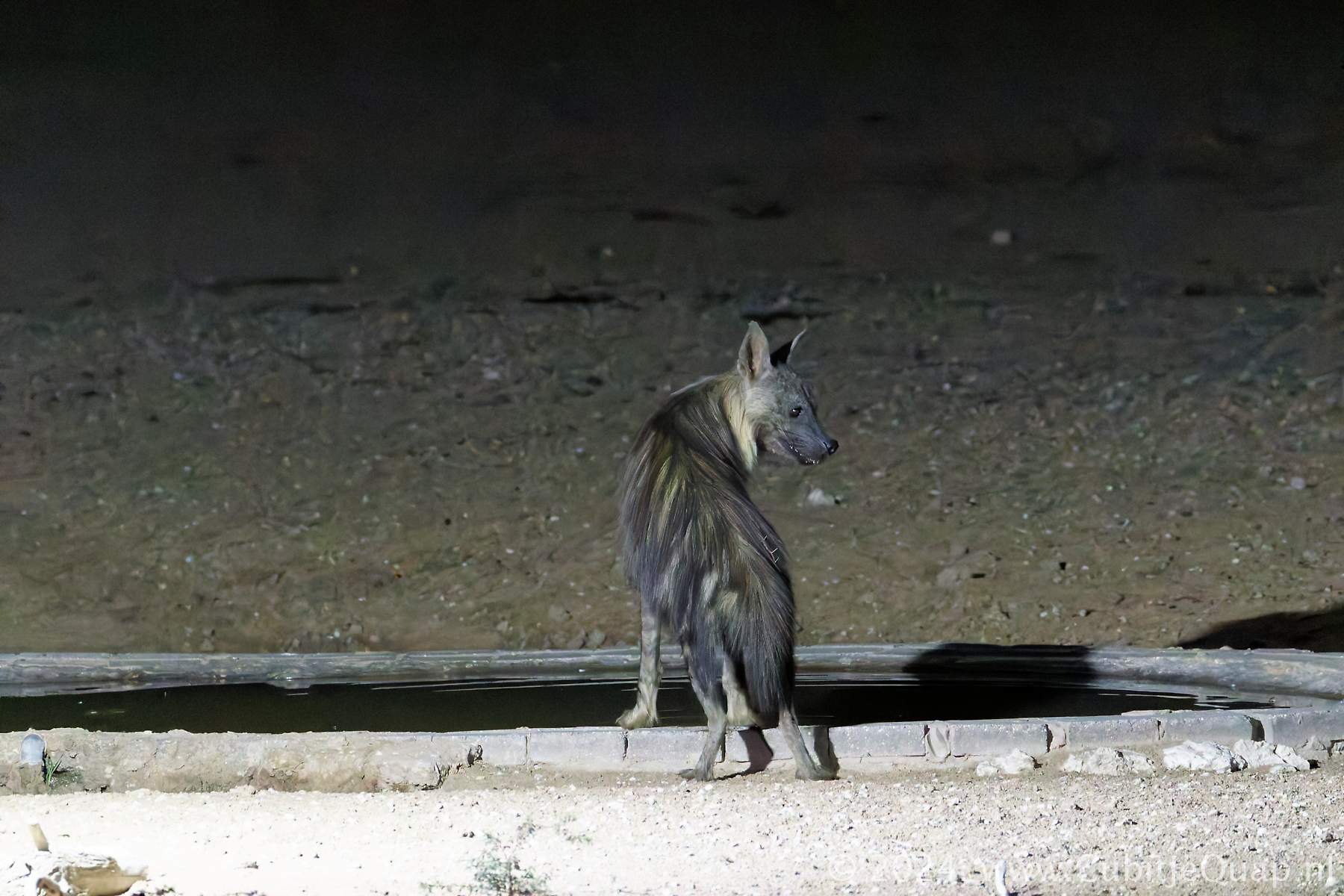Brown hyaena
Appearance
Male: Total length 130 - 160 cm; tail 17 - 30 cm; shoulder height 80 cm; mass 47 kg
Female: Total length 130 - 160 cm; tail 17 - 30 cm; shoulder height 80 cm; mass 42 kg
The brown hyaena is higher at the shoulder than at the hindquarters; the shoulders and chest are heavily built. The body is covered in a long, shaggy coat, with a dense mantle of hair on the back and shoulders. The mantle is lighter in colour than the rest of the body. The body colour varies from light to dark brown and the legs are striped black and light brown. The tail is short, bushy and dark. Ears are long, erect and pointed.
Habitat
Although today it is mainly found in drier parts of southern Africa, even occuring along the arid Namib Desert coastal belt, its past distribution shows that it has a potentially wide habitat tolerance.
Behaviour
Brown hyaenas are mainly nocturnal and are usually seen singly. Several animals may share a territory, although foraging is usually an individual activity. Territory size varies considerably, from about 19 km² in one study to between 235 km² and 481 km² in the southern Kalahari. The animals sharing a territory are apparently an extended family unit consisting of 4-6 individuals and all will assist in raising cubs. Territories are marked with droppings and secretions of anal glands. Unlike spotted hyaena, the brown hyaena is not particularly vocal.
Food
Brown hyaenas are mainly scavengers but they also eat a wide range of small vertebrates, insects and fruits. Hunting and killing of large prey is rare, although on occasion it has been recorded as killing sheep and goats in farming areas. Surplus food may be hidden in holes or under vegetation.
Interesting links
WikipediaIUCN Hyaena Specialist Group website



